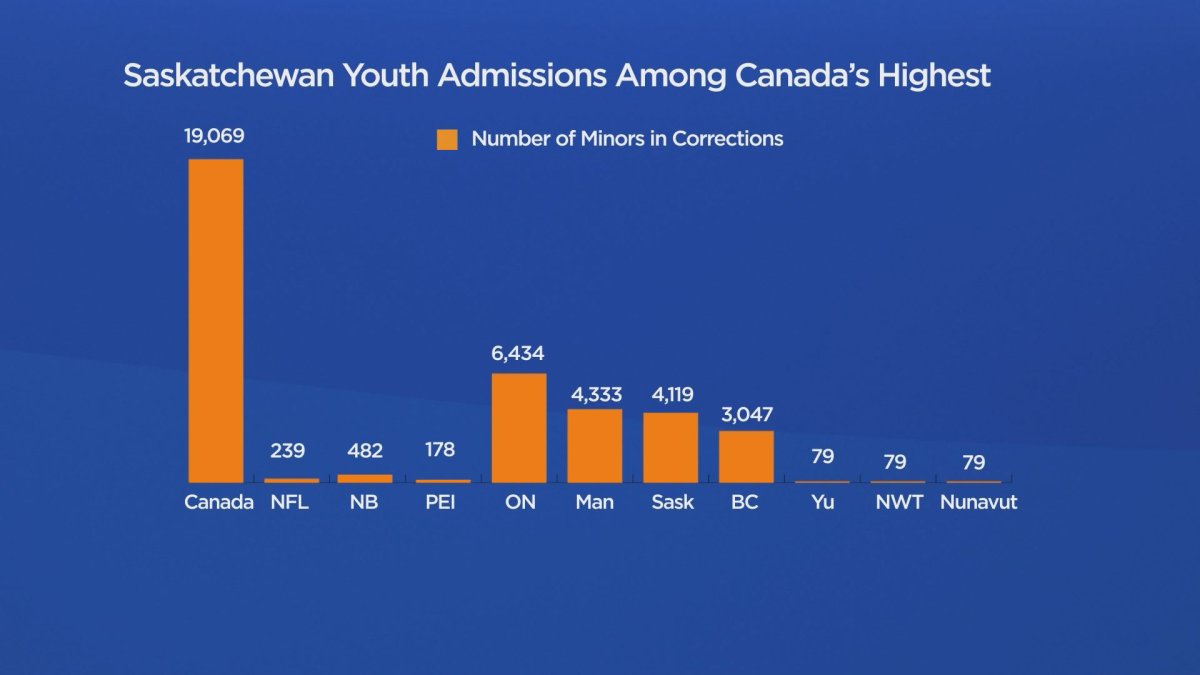“It was not surprising,” said Nicholas Bala, a professor of law at Queen’s University, referring to the high number of Indigenous youth in Saskatchewan correctional facilities. “It’s certainly concerning, but it’s a trend we’ve seen for a long time.”

Bala is also one the nation’s leading experts on youth criminal justice.
“As the overall rates of youth custody have been going down, the proportion of aboriginal youth has been going up,” he continued.
In 2006, 70 per cent of the male minors in correctional services were Indigenous; 86 per cent were women.
A decade later, those numbers skyrocketed to 92 per cent for boys and 98 per cent for girls, a dramatic over-representation of the roughly 16 per cent of the province that identifies as Indigenous.
“We are seeing the impacts of the legacy of colonization and the decisions made with those objectives,” argued former Nunavut Crown Prosecutor Qajac Robinson.
“Whether it’s residential school, the 60’s scoop, ongoing issues with the child welfare system, I think this is why we’re seeing this. Not only when it comes to rates of violence, but rates of incarceration and rates of institution generally,” she continued.
Saskatchewan has the third highest number of minors in custody, as well as the third highest number of minors in correctional services in the country.
WATCH: Half of all youth behind bars in Canada are Indigenous

According to Stats Canada, 4,119 youth were in the provincial correctional services in 2015-16, just below Mantioba (4,333) and Ontario (6,434). Data was unavailable for Alberta, Quebec and Nova Scotia.
“The fact that Saskatchewan has such a high rate of particularly youth incarceration is both a challenge and an opportunity,” Bala said.
“The opportunity is to try and work with these young people,” he added. “Help rehabilitate them, help them reintegrate in their communities, and that in the long term is going to result in safer communities and a more productive society.”
Bala noted that the time between when a minor is released and when they’re back in their community is vital to the rehabilitation. Surrounding young offenders with resources to rehabilitate themselves — both in custody and out — was essential.
“We have to have culturally-appropriate services. We have to understand where people who are committing offences are coming from and try to help them in a meaningful way to reintegrate into society,” he argued.
Some of the areas Bala highlighted were unemployment, cultural identity degradation, and drug and alcohol addiction services.
“It’s a reality that sometimes people who have had a hard time become quite hardened. We need to address those conditions,” he said.
- Posters promoting ‘Steal From Loblaws Day’ are circulating. How did we get here?
- Canadian food banks are on the brink: ‘This is not a sustainable situation’
- Video shows Ontario police sharing Trudeau’s location with protester, investigation launched
- Solar eclipse eye damage: More than 160 cases reported in Ontario, Quebec
For their part, the Ministry of Corrections does offer some of those services.
“We’re always looking at what we can do better in terms of programming especially. We have cultural programming in each of the youth facilities in the province. We work with elders, we work with cultural advisors, we work at the tribal councils and others to make sure that programming is in place. More important is connecting them with that programming when they leave,” Ministry of Corrections Communications Director Drew Wilby noted.
“Whether we have employment programs, or programs like we have in Regina through education programs that are dedicated to these youth that provide special supports and apparatus around them, we’ll continue to do what we think is working,” Wilby continued.
Wilby says the number of youth coming through the system has been decreasing over the last few years, and that the ministry is continuing their efforts to minimize the number of minors in the system.
“We’d like to see that number at zero,” he said. “We realize that that’s probably not a possibility, we realize we’re probably going to have youth continue coming through, but as long as we’re seeing those downward trends, which we have over the last three years, that’s positive.”






Comments